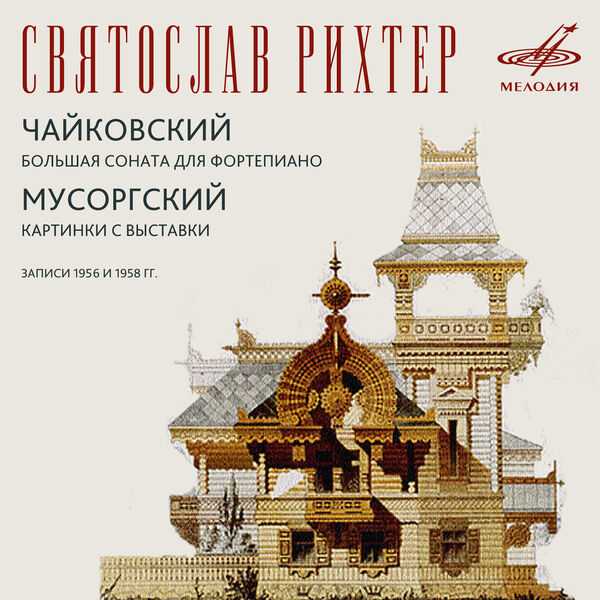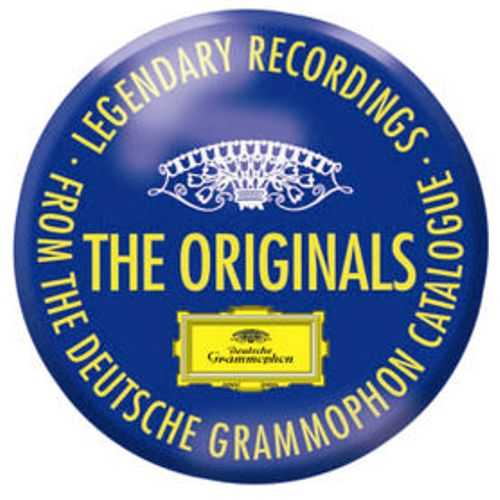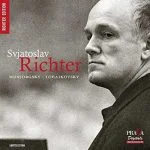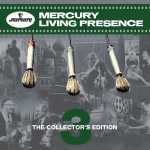
Composer: Pyotr Il’yich Tchaikovsky, Modest Mussorgsky
Performer: Sviatoslav Richter
Format: FLAC (tracks)
Label: Melodiya
Catalogue: MEL CD 1000515
Release: 1956, 1958 / 1994
Size: 192 MB
Recovery: +3%
Scan: cover
Tchaikovsky: Piano Sonata op.37
01. I. Moderato e risoluto
02. II. Andante non troppo quasi moderato
03. III. Scherzo – Allegro giocoso
04. IV. Finale – Allegro vivace
Mussorgsky: Pictures at an Exhibition
05. Прогулка
06. I. Гном
07. I. Прогулка
08. II. Старый замок
09. II. Прогулка
10. III. Тюильрийский сад
11. IV. Скот
12. IV. Прогулка
13. V. Балет невылупившихся птенцов
14. VI. Два еврея, богатый и бедный
15. VI. Прогулка
16. VII. Лимож. Рынок. Большая новость
17. VIII. Катакомбы. Римская гробница
18. IX. Избушка на курьих ножках. Баба-Яга
19. X. Богатырские ворота. В стольном городе во Киеве
P.I. Tchaikovsky wrote over a hundred piano pieces of various forms, from miniatures for children to large concertos, many of which enjoy wide popularity and rank among genuine masterpieces of world piano literature.
The Second sonata in G Major for piano was composed by Tchaikovsky in March-April 1878 in Clarens (Switzerland) and at Kamenka the estate of composer’s relatives, the Davydovs, near Kiev. Tchaikovsky began to work at the Sonata in 1877 after a long emotional crisis following his unhappy marriage. Tchaikovsky overcame this nervous breakdown by intensively devoting himself to music and the grandiose Sonata for piano, imbued with manful energy and powerful lifeasserting enthusiasm, was the result of his victory over this ailment.
Simultaneously Tchaikovsky worked at another outstanding composition – the Violin Concerto, which like the Sonata, reflected the luster of “the dawn of renascence and happiness” of which the composer speaks in his writings in connection with the sad emotional experience that he had successfully overcome. The character of the Sonata is more heroic and intense than that of the Concerto.
The world of human feelings, experiences and aspirations is revealed in the four movements of the Sonata. Here Tchaikovsky asserts his faith in bright ideals, and by creating emotional contrasts authentically portrays the struggle of humanity for happiness and the doubts, hesitations, and ordeals that attend this struggle. The first movement of the Sonata, beginning with a powerful and solemn heroic theme, speaks of the fervency of struggle, aspiration to happiness and the satisfaction one experiences when overcoming difficulties… The second movement sharply contrasts with the preceding one in its mood. The composer seems to lead us into a world of distress and “intolerable torments of despair”. The third movement is an impetuous, optimistic and witty scherzo but the life-asserting idea of the Sonata is summarized in the festive finale of the Sonata.
Tchaikovsky’s Grand Sonata, the first genuine piano sonata in Russian music, paved the way for the development of this form in national music. After Tchaikovsky, Rachmaninov, Scriabin, Glazunov, Myaskovsky, Prokofiev and other prominent composers frequently turned to this genre.
The suite for piano by Mussorgsky “Pictures at an Exhibition” (1874) was inspired by a visit to a posthumous art exhibit of canvases by the talented artist and architect Victor Hartmann who had been a close friend of the composer. Mussorgsky had already improvised some “pictures” of the future suite in early spring and the work was finally completed on June 22, 1874, and dedicated to V.V. Stassov. The suite, as edited by N.A. Rimsky-Korsakov, was published posthumously in 1886.
The word “suite” here is but a definition of this polychromatic composition. Everything here – the content and various forms of its representation are full of originality and inventiveness. The set or gallery of these highly diverse pieces – “pictures” where every “canvas” seems to have a life of its own, manifests the uniqueness of Mussorgsky’s musical Imagination and his perception of the world.
A single train of thought unites these alternating “pictures” into an integral whole. This chain of reflections begins with the prelude, which Mussorgsky called “The Promenade”. The broad theme of the prelude, written in the Russian folk spirit, subtly changing its guise appears in the interludes and even penetrates into the music of some of the pieces.
The first picture “Gnome” is a fantastic etude the curious halting rhythm and passages of which describe the awkward and bow-legged creature Hartmann drew for a toy nut-cracker.
The second “Promenade” is a brief restatement of the walking theme. Here the composer leaves behind him all gloomy fancies and sets forth on his quest for more joyous things.
“The Old Castle” is a musical reproduction of Hartmann’s canvas famous for the romanticism of medieval times it evokes: the silence of twilight is broken by the melancholy serenade of the troubadour who sings under the window of his beloved. This melody is played against the “lute-like” accompaniment of the strings.
A brief restatement of the walking theme unties the second and third pictures. And though “Jardin des Tuileries” is also tender in its tone and hue, its “plot” is quite different from the previous piece. Hartmann’s vivid sketch of this famous Parisian park finds interpretation in sprightly music which tells of the play of children and of the motley crowd that strolls among the trees.
“Bydlo”, the fourth piece, is ushered in Immediately and provides a keen contrast to the two previous pieces.
It was evoked by Hartmann’s sketch of a crude Polish ox-cart with huge wheels and provided the composer with the opportunity of presenting a scene from everyday life. A peasant’s song is heard against monotonous chords that recreate the stumbling motion of the ox-cart. But the echoes of this song, that seems to fade in the distance, are still audible in the Interlude (“Promenade”), dramatically stressed by a change in tonality.
But a new surprise awaits us: It is the magic scherzino “Ballet of unhatched chicks”. This picture was suggested by Hartmann’s design for the stage set of “Trilby”. The delightful music of this piece is remarkable for the wit and imagination that the composer displays.
The sixth picture “Two Jews: one rich, one poor” is introduced as a sharp contrast. This portrait of the two personages was painted by Hartmann from life and presented to Mussorgsky. The composer portrayed the men in a keen character piece, choosing very apt tone characteristics.
The seventh picture – “Limoges market” is a brilliant capriccio, where fleet melodic figures and leaping rhythms call to mind the din and rush of the market place. This piece is separated from the previous one by yet another “Promenade” Interlude closely approaching the initial and extensive statement of the theme.
“Catacombs”. Hartmann examines an ancient Roman sepulcher hidden under ground, by the light of a torch. The images of this picture called up memories of a dead friend and Mussorgsky portrayed the catacombs as a gloomy realm of ghosts of the past. A new episode that bears the Inscription “Speaking in a dead language with the dead” is ushered in and the transformed walking theme sounds here like a song of farewell.
But the gloom and bleakness of the “Catacombs” are quickly dispersed by the impetuous motion of “The hut on chicken feet”. And while Hartmann’s picture depicts the elegant frame of a bronze clock, Mussorgsky perceives it to be the dwelling of the fantastic Baba-Yaga. The music of this bright scherzo in the spirit of a Russian folk song glitters in the splendor of its colours and fiery rhythms. Here one hears the angry tapping of “the bony foot” of the witch and imagines her flight on a broom and the mysterious brewing of magic potions in the forest (the middle movement).
The suite closes with a stately epic finale “Bogatyr Gates in Klev”. It is a sonorous description of a monument planned by Hartmann for Klev. The image of the mighty Russian bogatyr or knight is magnificently represented in this majestic music of heroic character. The walking theme reappears for the last time merging with the sombre melody praising the strength and courage of the bogatyrs of Russia, the two melodies unite and soaring upwards blend with the festive pealing of bells.
No praise seems to be sufficient when one evaluates Richter’s playing. His performance is truly amazing in the philosophical depth and purity of feeling that make up his magic skill. It will not be an overstatement to say that his playing has reached the border-line of the possible and attainable.
Richter’s manner of playing is unique. He never imitates anybody and follows no model. He is always true to himself and his conceptions are fruits of his lively imagination. Well-nigh all his interpretations are such that they hold the delighted attention of the audience.
What is the secret of his unfading creative drive? How can the impact of his art on very different circles of listeners be explained?
Maybe the most remarkable feature of his playing lies in the fact that his performance is extremely lucid, his creative targets are always logical and he expresses the most subtle shades of thought and feeling with utmost clarity.
Richter plays nobly and, practically speaking, simply. His phrasing is irreproachably precise and true; tempos and nuances are stipulated by the logical sequence of the musical development, and the force of his pianistic expression is always in keeping with the strength of his perceptibility.
He reproduces tone colours on the piano with amazing subtlety (this ability to overcome “pianoforte limitations” and impart orchestral colouring to the art of pianism is justly associated with the names of Liszt and Busoni). Richter is famous for his deep penetration into the tone perspective of the piece he plays and he skillfully varies the dynamics and timbre of a sound, perceiving the degree of importance of each tone.
But his playing is not only lucid, precise and brilliant from the point of view of tone; it is exceptionally animated, inspired and picturesque. Listening to his performance one well-nigh “sees” the images he portrays be they landscapes, scenes of everyday life or fantastic pictures everything acquires life and expressive meaning.
Richter possesses the special ability of unexpectedly shifting from the stormy fortissimo to the softest pianissimo, that is based on the flexibility and softness of touch, on the gliding and soft depression of the keys. He not only paves the way for the culmination unfolding it with remarkable perfection until he reaches the “epicentre”, but with unfathomable ease and naturalness supersedes dynamic upsurge by abatement.
Moreover, he possesses yet another rare artistic quality – he is capable of convincing his listeners and subordinate them to his artistic will. His performance at times contains much that is unexpected or unusual but he hears and perceives the music he plays so clearly and profoundly, even when working the deepest layers of music that the listener involuntarily falls under the spell of his interpretation.
But Richter’s most remarkable attribute is his ability to approach each musical style in a different way, his ability to understand and reveal its logic in his own way. The pianist’s repertory is exceptionally rich and diverse yet he gives an individual reading of each composer.
True, a performance like Richter’s demands that man give all he possesses in terms of spiritual and physical effort and the pianist is always original, and nothing blunts the keenness of his perception or limits his creative fancy. With each year our admiration for Richter’s superhuman foil grows. It would seem that he had already reached the heights of art, yet he continues to progress in his mastership.



